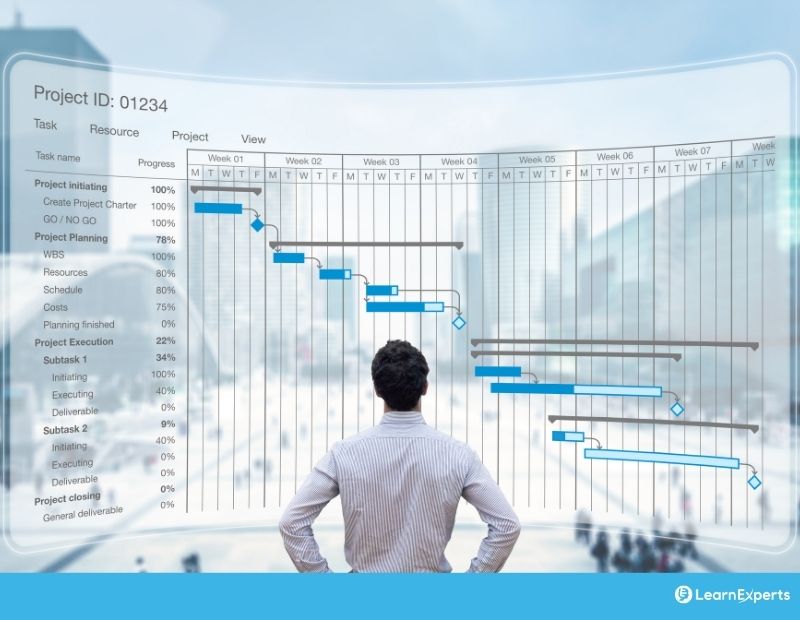Project management skills are in high demand. Organizations are looking for individuals who can take a structured and organized approach to achieving specific goals and completing projects. Whether you are looking to have your team learn to effectively use internal resources, identify and assess potential risks, or ensure that projects stay on track, here are nine free project management courses to explore to skill, upskill and reskill.
Free online training courses for project management
Project Management Institute
KICKOFF™ – An interactive 45-minute project management course and digital toolkit to get up to speed on the basics of project management (PM). Once you complete, share a badge that shows you know how to manage project(s) from start to finish.
edX
University of Adelaide: Introduction to Project Management – Learn how to plan, scope, schedule, cost and manage your project from beginning to end. Also explore how you to effectively communicate, manage people and employ leadership skills to successfully deliver your own project.
The University of Maryland, College Park: Applied Scrum for Agile Project Management – Learn the key project management processes, roles, mechanics, and philosophies behind Scrum.
Inter-American Development Bank: Project Management for Development – Get introduced to concepts and tools that can be applied to project management to generate material changes and meet expected objectives with limited resources in government and social projects.
Udemy
Introduction to Project Management – This course covers the basic concepts and dives into topics like Project Constraints, Organizational Structures, and Project Management Office (PMO). Also covers the basic Project Management Life Cycle and its types and Project Manager’s tasks in the different process groups like Initiation, Planning, Execution, M & C and Closing.
Project Management Templates Creation – Learn how to create project templates, calculate project costs, plan budgets, issue SOW, evaluate consultants or vendors, create a risk plan and many other templated project activities.
Project Management for Non-Project Managers – Learn the basics of project management, managing time, building a team, working with project stakeholders, planning, scheduling and budgeting, and managing risks.
Coursera
Project Management Essentials – Learn how to effectively communicate with team members, stakeholders, and clients and develop a comprehensive project plan to include timelines, resource allocation and milestones. You will also learn the technical skills in becoming proficient in selecting the appropriate project management software and tools to manage a project.
Great Learning
Project Management – This course covers essential topics from an Introduction to Project Management through the phases of a project, from Initiation to Closing.
FAQs
What is project management?
Project management is the process of planning, organizing, and overseeing the work required to achieve specific goals within a defined timeframe and budget. It’s used to complete projects—whether that’s launching a product, building a website, or organizing an event—efficiently and successfully.
What are the 5 steps of project management?
The 5 key steps (or phases) of project management are part of what’s known as the Project Life Cycle. These steps help guide a project from start to finish in a structured and manageable way:
Initiation – Defining the project, its goals, scope, and feasibility.
Planning – Creating a detailed roadmap that outlines tasks, timelines, resources, and budgets.
Execution – Carrying out the plan, managing teams, and coordinating tasks.
Monitoring & Controlling – Tracking progress, managing risks, and making adjustments as needed.
Closing – Wrapping up the project, delivering final results, and reviewing what was learned.
What are the core project management principles?
The core elements of project management—often referred to as the Project Management Triangle or Triple Constraint—represent the foundational components that every project must balance. But modern project management recognizes more than just three elements. Here’s a breakdown:
- Scope – What’s being done? The work required to deliver a product or service includes features, functions, tasks, and deliverables. Too much = scope creep. Too little = unmet expectations.
- Time (Schedule) – When is it due? The timeline for completing project tasks includes deadlines, milestones, and duration. Delays can ripple across the whole project.
- Cost (Budget) – How much will it cost? All the financial resources required, including materials, labor, tools, software, and contingencies.
Modern frameworks often include these additional core elements:
- Quality – Is it good enough? The standard or grade of deliverables must meet the expectations of the customer or stakeholders. Focusing too much on speed or cost can compromise quality.
- Resources – Who and what is needed? Includes people, tools, equipment, and materials. Poor resource management = burnout, bottlenecks, and delays.
- Risk – What could go wrong? Identifying, analyzing, and planning for potential issues. Risks can be internal (such as staffing issues) or external (including market changes and weather conditions).
- Communication – How will we talk about it? Keeping stakeholders, teams, and clients informed. Includes reports, meetings, updates, and documentation.
- Stakeholder Engagement – Who cares about the outcome? Managing expectations and keeping key people involved. Includes customers, executives, partners, and even regulators.
What are the 5Ms of project management?
The 5Ms of Project Management refer to five essential resources that influence the success and execution of any project. These elements—Manpower, Machine, Materials, Method, and Money—help project managers analyze resource needs, identify potential challenges, and improve efficiency.
- Manpower refers to the people involved in the project, such as team members, stakeholders, and external collaborators. It’s not just about headcount but also about having the right skills, clear responsibilities, and good communication practices. Without an effective team or proper leadership, even a well-funded project can fail.
- Machine represents the tools, equipment, technology, or software needed to carry out project tasks. This could include project management platforms like Trello or Jira, construction machinery, or specialized technical equipment. Ensuring these tools are appropriate, updated, and functional is key to avoiding delays and inefficiencies.
- Materials are the physical or digital resources required to complete project tasks. In a construction project, these could be bricks, concrete, or wiring. In a tech project, materials might include datasets, templates, or frameworks. Having the right materials available at the right time, and in the right quality, is essential for smooth progress.
- Method refers to the processes and methodologies used to plan, execute, and monitor the project. Common approaches include Agile, Waterfall, Scrum, or Lean, depending on the project’s nature. Choosing the right method can greatly influence how well a project adapts to change and meets its goals.
- Money is the financial resource allocated to the project, including the budget for salaries, tools, materials, and contingency costs. Effective budgeting and financial monitoring are vital to avoid overspending and to ensure the project stays financially sustainable.
In some contexts, a sixth “M”—Measurement—is also considered. This involves tracking performance, quality, and progress using metrics or key performance indicators (KPIs) to ensure the project stays on course and meets expectations.
What is the golden rule of project management?
The Golden Rule of Project Management emphasizes treating all stakeholders—team members, clients, and sponsors—with respect, transparency, and fairness. This principle emphasizes the importance of clear communication and effective expectation management to foster trust and ensure project success.
While the exact phrasing of this rule may vary, the underlying concept aligns with widely recognized best practices in project management. For instance, the Association for Project Management (APM) emphasizes the importance of engaging with stakeholders early and frequently, as well as maintaining effective communication throughout the project lifecycle.
Similarly, other industry sources emphasize the importance of defining clear objectives and fostering open communication with all project participants to mitigate misunderstandings and enhance collaboration.
How to develop your own free courses
If you are looking to develop your own internal, free or paid courses, look no further than LEAi to help you build the training content.
LEAi is our AI-enabled training content creation tool that allows instructional designers, HR, marketing, customer success and other teams to take documents and presentations already existing in the organization and transform them into content for internal training sessions, eLearning, videos and more. Features clients love include:
- Automatic training content creation – Import content from your subject matter experts (SME), like documents, presentations, webpages and wikis, and LEAi writes the learning objectives and foundational content for you in seconds.
- LearnAdvisor – Get suggestions on how to improve your training content and let the tool do it for you.
- Microlearning creator – Let LEAi take large sections of content and break it into smaller courses so it is easier for your learners to take and understand.
- Translations – Quickly translate course content with AI suggestions and your own input.
- Interactive elements – LEAi transforms static content into engaging interactive flip cards, tabs, processes, and more, so you boost engagement, knowledge retention, and visual variety in your courses.
- Test question generator – LEAi suggests multiple questions based on your content in seconds.
- Course updater – LEAi intelligently updates changes to your courses in seconds so that you can eliminate the mundane task of updating individual courses.
If you are looking for help to build and project manage your training program development or build your own free courses, drop us a note!




